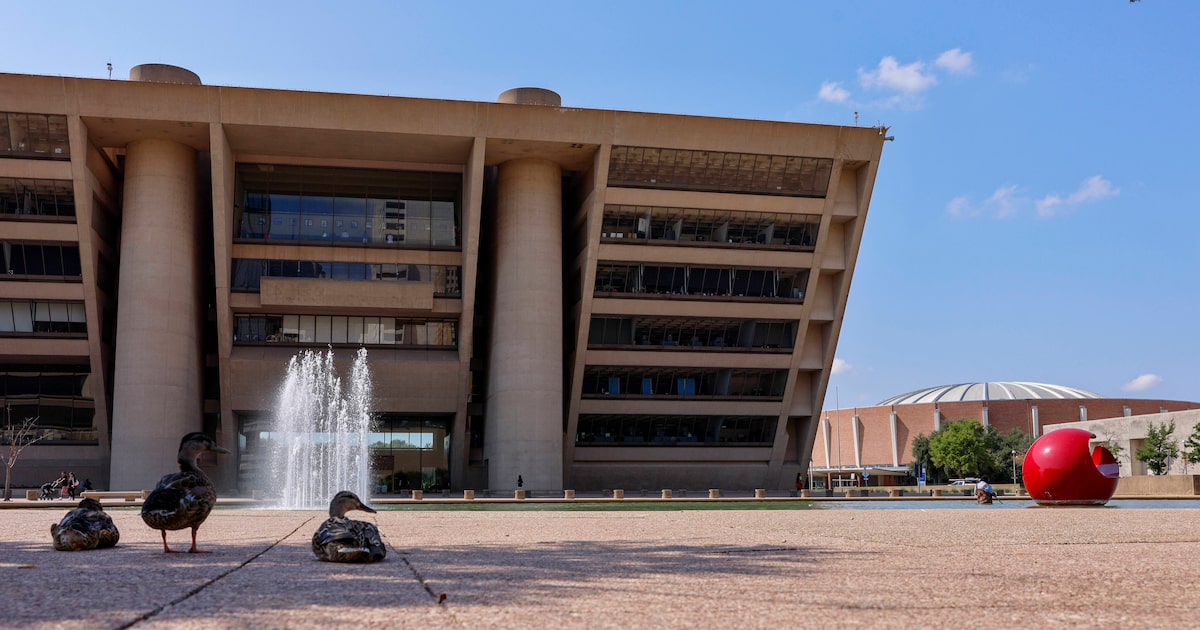We could argue forever about the aesthetic value of Dallas City Hall.
Some see the massive concrete structure famous for its wedge design as a high statement of Brutalism and an active expression of placemaking.
Our own assessment of the beauty of 1500 Marilla St. is less glowing. I.M. Pei was a genius, but no one would argue City Hall is among his summit works.
As for the “placemaking” plaza out front, it never worked as intended. It’s barren at best and has little associative function with the building it fronts. On the vast concrete plaza, a lonely parks department employee brushing down the reflecting pool is usually the sole soul who spends much time out there. The place is too hot, too cold, too windy or too something for much else. Attempts to “activate” it have repeatedly failed.
Opinion
But as we say, one could argue about the aesthetic in a circle as big as that pool and get nowhere at all.
Function lagged form at Dallas City Hall from the day it opened, and it has only gotten worse since.
Those of us who have spent any time in the building are aware that its problems are not simply a matter of the council or management neglecting to maintain the property. The building has fundamental concerns based on its scale, its age and the way its design intersects with modern security and technology concerns.
A debate has opened on whether the city should rethink the use of the space where City Hall sits, and we strongly encourage council members and civic leaders to be open-minded to new possibilities.
The price tag on catching up to deferred maintenance on City Hall could be more than $100 million, our newsroom colleagues recently reported.
That’s just for repairs. The cost would do little, we expect, to address some of the key functional problems we have experienced in our years wandering its halls. Because many of its interior walls are concrete, City Hall can be a tough and expensive place to manage connectivity. It’s also a tricky space to adapt to changing needs of departments. A recent visit to the office of Park and Recreation Director John Jenkins was almost unbearable as the heat of the afternoon sun made an oven of the walls. Shades are tricky for angled windows, and Jenkins has a portable fan running most days.
A decision on the building’s future will have to be made sooner than later. The costs will only climb with time.
This is a moment that requires vision, public discussion and action. Those are not things the city has excelled at in recent years, although we believe they have improved significantly under City Manager Kimberly Bizor Tolbert.
Downtown is at a crossroads, and we will have more to say on that in coming weeks. But beginning the discussion with the future of City Hall and that entire corridor of downtown seems smart. It shows corporate and entertainment giants that we are serious about the future.
Downtown is at risk of losing anchor corporate tenants, and rumors abound about what AT&T and Comerica, which was recently acquired by Fifth Third Bank, will do. It’s also at risk of losing its two pro sports franchises in the Dallas Mavericks and Dallas Stars.
The city and those who love it need to start thinking differently about downtown and its future. And City Hall needs to start thinking about shifting the way it does business.
Fort Worth has demonstrated how a city can smartly and attractively engage in an adaptive reuse of a major building. The city moved into the old Pier 1 building in March, and that decision has gotten rave reviews.
Fort Worth City Manager Jay Chapa joked that the old City Hall, dating to 1971, had all the charm of a Soviet-era apartment block. The dank interior and greige exterior of Dallas City Hall can call to mind a similar dystopia. In fact, it served exactly that purpose when it was featured as the headquarters of an evil corporation in 1987’s RoboCop.
We understand that many see it differently. Whether one considers City Hall beautiful or brutal or both isn’t really what’s most important here.
What we need to focus on is the overall health of downtown and its future. The city and region must have a dynamic and excellent core that is filled with life and culture. We need the chance to dream about this space being truly active and filled with public amenities in a way it isn’t now. Could that be a new arena or entertainment district? Could it be more residences to bring additional life to the core? The possibilities seem endless.
If the space where City Hall sits can contribute to that in a greater way, we all have a responsibility to keep all our options open.
We welcome your thoughts in a letter to the editor. See the guidelines and submit your letter here.
If you have problems with the form, you can submit via email at letters@dallasnews.com
